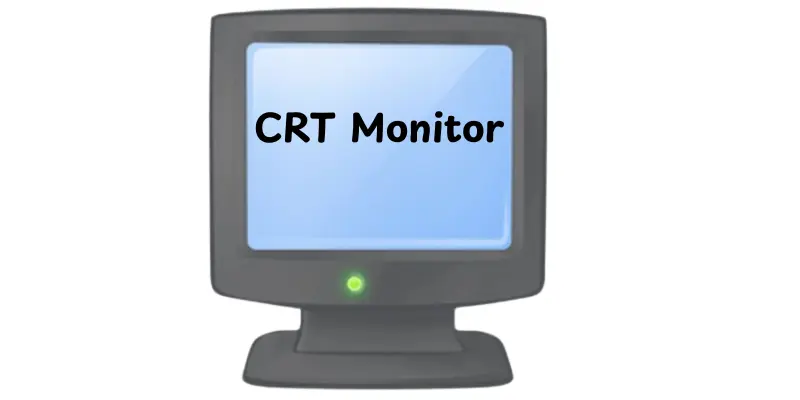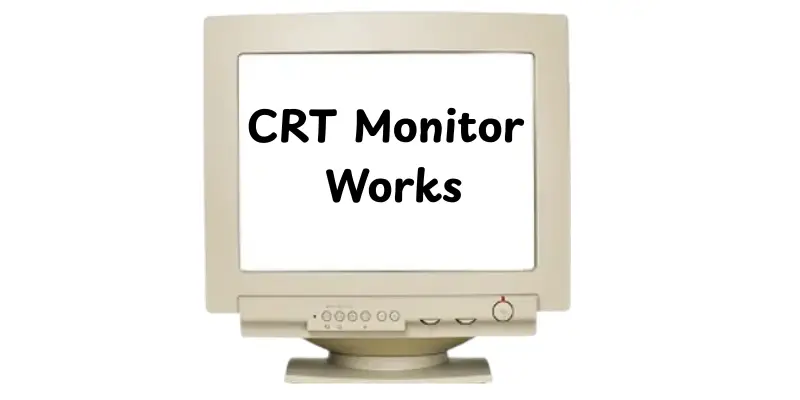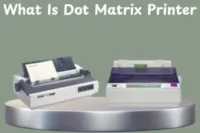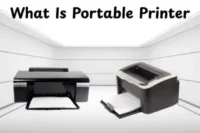What Is CRT Monitor? Uses, Types, and Features Explained
Published: 19 Oct 2025
Have you ever looked at an old, bulky screen and wondered how it can still produce such clear and brilliant colors? You are not alone; many people find this old technology confusing. Don’t worry, this instruction will clarify everything. We’ll explain how a CRT monitor works, what makes it unique among different types of monitor, its advantages and disadvantages, and why some people still use them today. By the conclusion, you’ll understand why this classic screen is still important in modern technology discussions.
What is CTR Monitor?
The word CRT monitor belongs to a Cathode Ray Tube monitor. It is a classic display that was once used for computers and TVs. Inside the monitor, an electron beam lights up small dots on the screen, forming pictures. The screen is made of glass and has a curved front, giving it a deep, boxy look. These monitors were popular before flat displays became common. They are known for their bright colors and smooth image quality.

A short history of CRT Monitor
The history of CRTs goes back to the late 1800s, when scientists discovered that electron beams could produce light on a screen. This concept turned into the first working display tubes in the early twentieth century. By the 1980s and early 2000s, CRT monitors were regularly showing in computers, TVs, and gaming machines. As flat LCD and LED panels grew more affordable and lightweight, CRTs disappeared from the market. Today, they are usually found in retro gaming rooms, old TV collections, and specialized labs.
How a CRT monitor works
Ever wonder how an old CRT screen displays bright, moving pictures? It may appear simple on the surface, but within, there is some clever science at work. Let’s take it step by step in an easy way.
- Inside the monitor, there is a small component known as an electron gun that emits tiny particles known as electrons.
- These electrons flow through a long glass tube and onto the screen at the front.
- The inside of the screen is covered in phosphor dots that glow when hit by electrons.
- Magnets and coils around the tube guide and aim the beam, so that it hits the right targets.
- The beam moves fast from left to right and top to bottom, tracing the whole image line by line.
- This happens many times each second, so your eyes experience smooth, moving pictures instead of flickering lines.

Types and sizes of CRT monitors
Not all CRT monitors are the same. Over time, many designs were made to improve color, sharpness, and image quality. Here are the main types you’ll come across, each with their own unique feature.
- Monochrome CRT Monitor – Shows images in one color, usually green, amber, or white, and was used in early computers.
- Color CRT Monitor – Displays full-color images using red, green, and blue dots on the screen.
- Shadow Mask CRT – Uses a metal sheet with tiny holes to control where colors appear, giving a clear and balanced picture.
- Aperture Grille CRT (Trinitron) – Uses thin vertical wires instead of holes for brighter and sharper images.
- Flat CRT Monitor – Designed with a flatter screen to reduce glare and distortion while keeping the CRT technology.
Applications of CRT Monitor
Their excellent picture quality and color accuracy make them ideal for many kinds of applications. Here are some of the main applications in which CRTs play an important part.
- Computers – Used as display screens for desktops in homes, schools, and offices.
- Television Broadcasting – Provided clear visuals for both black-and-white and color TV sets.
- Video Editing – Helped editors see true colors and precise details while working on footage.
- Medical Equipment – Used in monitors for scanning machines and diagnostic displays.
- Gaming – Popular among gamers for fast response time and smooth motion display.
- Radar and Military Systems – Displayed tracking information and data in control rooms.
- Scientific Research – Used in laboratories for visualizing data and running experiments.
Key Parts of CRT Monitor
A CRT monitor has several main parts that work together to create images on the screen. Each part has a special role in turning electrical signals into pictures that we can see. Here are the key components explained in simple words.
- Electron Gun – Produces a stream of electrons that create the image on the screen.
- Phosphor Screen – Coated inside the display; it glows when hit by electrons to form pictures.
- Deflection Coils – Control the direction of the electron beam so it moves across the screen correctly.
- Shadow Mask or Aperture Grille – Guides the beam to hit the right color dots for clear and accurate images.
- Glass Envelope – The outer tube that holds all the parts and keeps the inside vacuum-sealed.
- Anode and Cathode – Help speed up and direct the flow of electrons from the gun to the screen.
- Control Circuit – Manages brightness, color, and image position for smooth display performance.
Function of CRT Monitor
A CRT monitor works as the main display device that shows images, text, and videos from a computer or other source. Its main function is to convert electrical signals into visible pictures on the screen. Here’s how it does that in simple steps:
- It receives signals from the computer’s graphics card.
- Inside, an electron gun shoots beams of electrons toward the screen.
- The screen is coated with phosphor dots that glow when hit by these electrons.
- Deflection coils guide the beam to the right spots, drawing the image line by line.
- This process happens very quickly, making the pictures look smooth and steady.
Advantages and Disadvantages of CRT Monitors
In this section, we will look at the pros and cons of using a CRT monitor. Knowing both sides will help you understand why these monitors were once popular and why they are less common today.
| Advantages |
|---|
|
| Disadvantages |
|---|
|
Buying a CRT Monitor of practical tips
Even though CRT monitors are no longer made, many people continue to seek them out for gaming, video editing, or collection. Finding one that is good takes a little attention and knowledge. Here are some simple tips to help you buy the right CRT monitor today.
- Check the screen condition – Avoid units with cracks, burn marks, or color stains.
- Test before buying – Plug it in and look for sharpness, color balance, and stable brightness.
- Look for low usage hours – A screen used less will last longer and perform better.
- Inspect image geometry – Make sure the picture looks straight and not bent at the edges.
- Listen for noise – A loud buzzing or clicking sound may mean power or coil problems.
- Check input ports – Make sure it supports your device, like VGA, RGB, or composite.
- Ask about storage – Monitors kept in dry, cool places are safer and cleaner inside.
- Research model reviews – Some CRT models are known for better color or less distortion.
- Plan for transport – These monitors are heavy, so move them carefully with support.
- Set a fair price – Vintage or rare models cost more, but avoid overpaying for damaged units.
Conclusion
So, guys, we’ve covered everything you need to know about a CRT monitor—from how it works and its main parts to its benefits, drawbacks, and buying tips. These iconic displays may be old, but they still have an original value for gamers, collectors, and tech lovers who enjoy image quality and history. If you come find a good one in working order, take care of it—it’s a piece of tech history worth keeping. Keep engaged, friends, and keep learning about the amazing world of displays!
FAQs
CRT stands for Cathode Ray Tube. It works by shooting tiny electron beams onto a screen coated with phosphor, which glows to form images. The beam moves quickly across the screen to create smooth motion. This process repeats many times every second to display pictures and videos clearly.
CRTs have deeper blacks, better color accuracy, and no motion blur, which makes them great for gaming and video. However, LCDs are lighter, thinner, and use less power. For daily use, LCDs are more practical. But for retro gaming or color-critical work, many still prefer CRTs.
No, CRT monitors can’t truly show 4K resolution. They don’t have fixed pixels like modern screens, so their sharpness depends on size and quality. Some high-end CRTs can show detailed HD images, but not the full 4K clarity that today’s displays offer.
CRT monitors often come with analog inputs like VGA or RGB, and sometimes composite or S-Video on older models. Modern flat panels use digital inputs (HDMI, DisplayPort) which may require adapters for use with a CRT.
Old CRTs contain heavy glass, vacuum tubes, and sometimes leaded glass and high-voltage components, so they must be handled and disposed of carefully. It’s best to recycle them through certified e-waste programs rather than just throwing them out.

- Be Respectful
- Stay Relevant
- Stay Positive
- True Feedback
- Encourage Discussion
- Avoid Spamming
- No Fake News
- Don't Copy-Paste
- No Personal Attacks

- Be Respectful
- Stay Relevant
- Stay Positive
- True Feedback
- Encourage Discussion
- Avoid Spamming
- No Fake News
- Don't Copy-Paste
- No Personal Attacks





